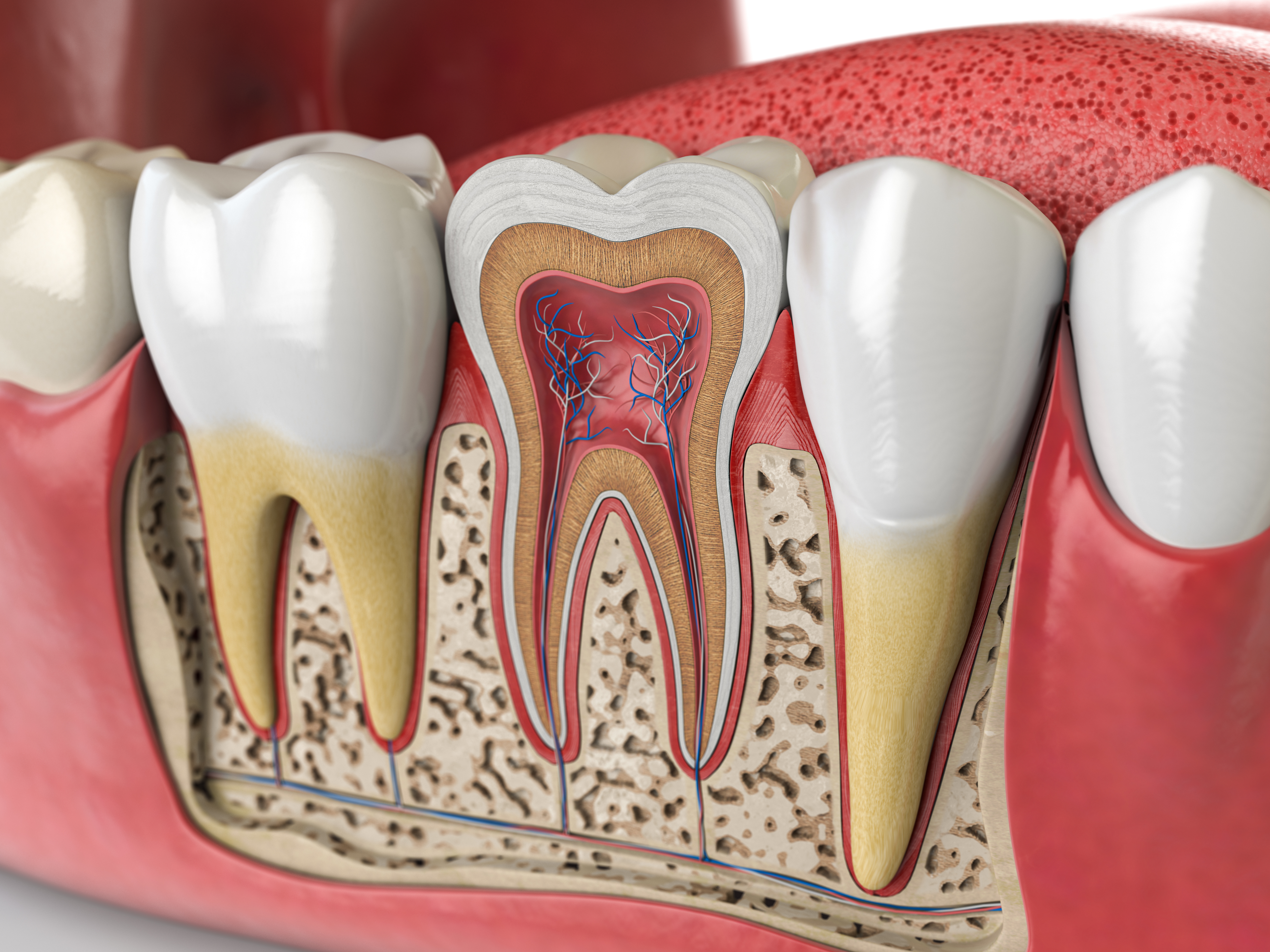
When a person’s root canal becomes infected, it may be necessary to perform endodontic treatment to avoid further damage or even tooth loss. An infection of a tooth nerve can be painful and can only be remedied by a root canal or extraction. At Alon Dental Care, Dr. Sandefer will carefully evaluate the situation and make recommendations as to what treatment would be most beneficial.
Root Canal Infection Explained
The tooth is made up of a crown and a root, and in the center of the tooth is the root canal. This is where the living tissue of the tooth resides, commonly referred to as the nerve of the tooth.
However, it is more than just a nerve. It is also made up of connective tissue and blood vessels and can relay information brought about by pain. If your tooth has suffered any sort of damage, you will feel slight or extreme discomfort when coming in contact with cold or hot temperatures, certain chemicals, or physical pressure.
Sometimes, the decay of the tooth is so extensive that the living tissue within the tooth dies. Some possible causes for this damage to nerve tissue include:
- Infectious fluids and bacteria leaking into tooth fractures
- Poor dental hygiene
- Excessive or severe cavities
- Physical trauma to the face
In most instances, antibiotics can temporarily ease the infection by killing off the bacteria, but it is only a matter of time before more bacteria re-infect the tooth.

Proper Root Canal Treatment
Contrary to popular belief, root canals are not extremely uncomfortable or painful. In fact, Dr. Sandefer has perfected the procedure in order to provide the utmost comfort to patients.
On occasion, the first step involves spending a couple of days on antibiotics until the infection is generally controlled.
Afterward, Dr. Sandefer provides an anesthetic for the next phase of treatment. A small hole is made at the top of the tooth in order to remove the underlying bacteria and dying tissue from the area. The inside of the root canal is then cleaned out with Dr. Sandefer’s trusty endodontic rotary instrument. The treatment is normally completed in one to two visits, depending on the level of infection.
After cleaning and shaping your root canals, Dr. Sandefer fills the canal with a man-made protectant material in order to prevent future bacteria from reaching the root and reinfecting the bone.
Once the root filling material is implemented, the second stage of the root canal treatment begins with a secondary material bonded in the center of the tooth to form a stable foundation for a crown to be made and cemented in. This bondage is necessary to give strength to the tooth, given that the root canal procedure has the potential to greatly weaken its overall structure.
The tooth is then prepped for a crown. The dentist will take an impression of the tooth and send it to the dental lab to be used for reference in making the dental crown. Once created, typically in two to three weeks, Dr. Sandefer will fit and cement the crown into place to replace the tooth structure you originally lost to decay or trauma.
If you are experiencing severe tooth pain and suspect that your root canal is compromised, sign up for a consultation by contacting
Alon Dental Care at (210) 979-0707 today.
